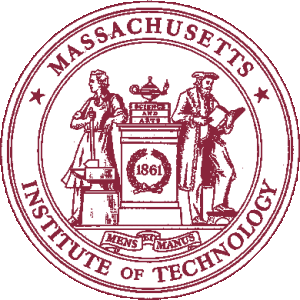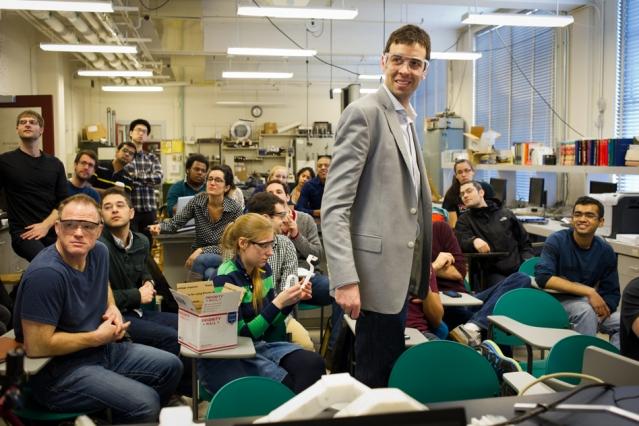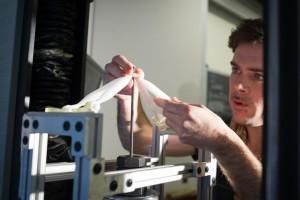 Of all the universities and institutions that are experimenting with and further innovating upon 3D printing, not many can match the technological prowess of the prestigious Massachusetts Institute of Technology (MIT). The Cambridge-based university has conducted a number of studies with 3D printing technology, including their work with printable hydraulics, which they predict will eventually lead to 3D printed robots walking right out of the printer, as well as a 3D glass printer, which is known to MIT researchers as the ‘viscous sewing machine.’
Of all the universities and institutions that are experimenting with and further innovating upon 3D printing, not many can match the technological prowess of the prestigious Massachusetts Institute of Technology (MIT). The Cambridge-based university has conducted a number of studies with 3D printing technology, including their work with printable hydraulics, which they predict will eventually lead to 3D printed robots walking right out of the printer, as well as a 3D glass printer, which is known to MIT researchers as the ‘viscous sewing machine.’
One MIT graduate course taught by Professor John Hart, the Mitsui Career Development Associate Professor in Contemporary Technology and Mechanical Engineering, is set to send MIT grad students down this same road of 3D printing innovation. The course, which is registered under 2.S998 (Additive Manufacturing), was created by Hart in 2013. The curriculum is essentially focused on the fundamentals, applications, and implications of 3D printing, but these graduate students are doing a whole lot more than learning these lessons from a textbook. Professor Hart has set up an educational and hands-on classroom environment, where these students can utilize commercial-grade 3D printers to create custom objects, and will also square off in a competition to see who can design, print, and build the sturdiest and lightest bridge.
“I asked them to think completely off the rails, if they could conceive a 3-D printer that’s never been made before, or a useful material that can’t be printed using current printers,” Hart said. “We identify the biggest problems or creative opportunities, then reign ourselves in and say, ‘What can we actually do this semester?'”
The course began with a lab assignment where students are asked to design and 3D print parts that would be too complex and difficult to create with traditional manufacturing methods. The outcome from the very first assignment already proved to be successful, as students created a number of unique parts right off the bat, including personalized accessories for electronics, small pieces of jewelry, a cable organizer, and a case for a custom circuit board. Following this hands-on introduction to 3D printing technology, Hart then challenged his students to a bridge-building competition, where they must design and 3D print a multi-part bridge with the highest ratio of strength to weight.
After the grad students have fully grasped the principles and processes behind 3D printing, Hart inspires his students to completely reinvent the technology. With the final capstone project, the professor calls upon his students to “conceptualize, justify, design, and prototype a novel contribution to additive manufacturing technology.” When the course ended, the final projects were displayed in an expo that was open to the public. The students’ class projects have led to a number of patents and entrepreneurial efforts, many of which Hart has detailed in an article for the Additive Manufacturing journal. These projects are particularly focused on utilizing unexpected materials, such as printable molten glass and soft-serve ice cream, which helps prove the undiscovered value that 3D printing holds for the future.
To create the soft-serve ice cream 3D printer, the student team simply flipped over a low-cost 3D printer, placed it inside a freezer, and fed the ice cream solution through a rotating Cuisinart machine. In order to quickly and efficiently freeze the ice cream after printing, the team also utilized a feed of liquid nitrogen, which enabled them to 3D print soft-serve ice cream into stars and circular shapes. For the molten glass 3D printer, the student team, which included an experienced glass blower, built their device entirely from scratch. According to Hart, the team utilized the MIT Glass Lab to scoop out molten glass from a furnace and pour it into their custom printer, learning how to control the process during this experimentation. This glass 3D printer, which was essentially built to fabricate sculptures out of molten glass, has already been patented by the student team.
Ultimately, Professor Hart hopes that his curriculum helps to inspire other educational institutions to further their access and implement 3D printing into their courses, which he feels is a necessity for the expansion and improvement of this emerging technology. In the near future, Hart hopes to start an industry consortium at MIT to support their efforts in additive manufacturing.
“Through our teaching and research, we hope to open up new opportunities for 3-D printing,” Hart said. “To me, it’s not clear yet what all those opportunities are. It’s only a matter of time for the creativity of the world to figure that out.”
Check out the video below to see the students’ soft-serve ice cream 3D printer in action! What do you think of these project ideas? Discuss in the MIT Graduate 3D Printing Course forum over at 3DPB.com.
[Source/Images: MIT News]
Subscribe to Our Email Newsletter
Stay up-to-date on all the latest news from the 3D printing industry and receive information and offers from third party vendors.
Print Services
Upload your 3D Models and get them printed quickly and efficiently.
You May Also Like
Nikon SLM Solutions Sells SLM 500 to Primary Weapon Systems to Expand Suppressor Production
Primary Weapons Systems (PWS) is a Boise, Idaho-based manufacturer of suppressors, firearms, and related components. A subsidiary of Vigilant Gear and a sister company to aftermarket Glock slide manufacturer Lone...
3DPOD 261: Tooling and Cooling for AM with Jason Murphy, NXC MFG
Jason Murphy´s NXC MFG (Next Chapter Manufacturing) is not a generalist service; instead, the company specializes in making tooling. Using LPBF and binder jet, the company produces some of the...
HP and Firestorm Labs Form Partnership to Use Multi Jet Fusion 3D Printers in Deployable Factories
HP Inc., maker of a range of additive manufacturing (AM) solutions including the Multi Jet Fusion (MJF) ecosystem, has announced a partnership with Firestorm Labs, a developer of containerized, deployable...
3D Printing News Briefs, July 2, 2025: Copper Alloys, Defense Manufacturing, & More
We’re starting off with metals in today’s 3D Printing News Briefs, as Farsoon has unveiled a large-scale AM solution for copper alloys, and Meltio used its wire-laser metal solution to...


































